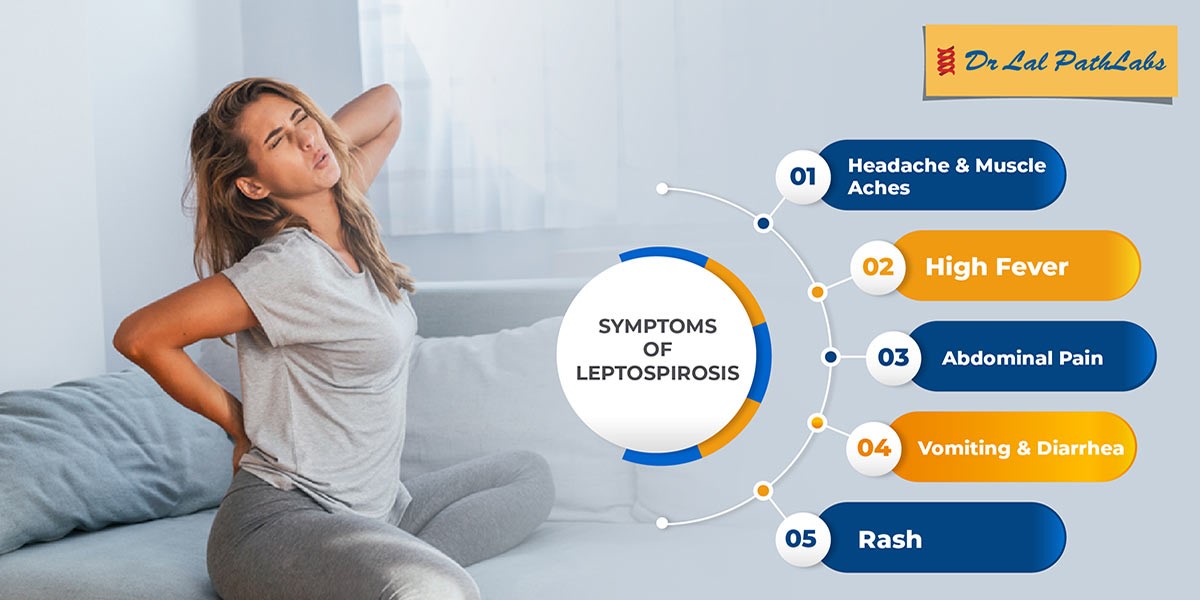Leptospirosis: Causes, Symptoms and Diagnosis
What is Leptospirosis?
Leptospirosis is a serious waterborne disease that poses a significant threat to human and animal health. It is also known as ‘Weil’s Disease’ caused by Leptospira bacteria. Leptospira bacteria are typically found in the urine of infected animals and can survive in water or soil for long periods.

How is Leptospirosis Transmitted in Humans?
Leptospirosis is primarily transmitted to humans through direct or indirect contact with the urine or other body fluids of infected animals. There are various ways through which Leptospira bacteria can enter the human body:
- Skin contact: Leptospira bacteria can penetrate the skin when it comes into contact with water, soil, or surfaces contaminated with the urine or body fluids of infected animals. Skin abrasions, cuts, scratches, or mucous membranes (eyes, nose, mouth) with breaks provide entry points for the bacteria.
- Waterborne transmission: Leptospira can survive in water or moist environments for extended periods. When individuals swim, wade, or bathe in contaminated water sources (such as lakes, rivers, or puddles) or come into contact with soil or mud contaminated with urine, the bacteria can enter their bodies through the skin or mucous membranes.
- Food and drink: Consuming food or drink contaminated with urine from infected animals can lead to leptospirosis.
- Direct contact: Direct contact with tissues or body fluids (such as blood, urine, or reproductive fluids) of infected animals, particularly through wounds or mucous membranes, can also lead to transmission. This mode of transmission is more relevant in specific situations like veterinary work, slaughterhouses, or handling infected animals.
What are the Symptoms of Leptospirosis?
The symptoms of leptospirosis can vary widely, ranging from mild to severe. Some individuals may exhibit no symptoms at all, while others may experience a flu-like illness or develop more severe complications.
The incubation period (time between exposure to the bacteria and onset of symptoms) is usually 7 to 12 days (about 2 weeks), but it can range from 2 to 30 days (about 4 and a half weeks).
Common symptoms of leptospirosis include:
- High fever
- Muscle pain and body aches
- Chills and shivering
- Fatigue and weakness
- Headache
- Nausea and vomiting
- Eye redness and sensitivity
- Jaundice
- Kidney problems
- Cough, chest pain, and difficulty breathing can occur in severe cases with lung involvement.
How is Leptospirosis Diagnosed?
Leptospirosis is diagnosed through a combination of clinical evaluation, medical history, and laboratory tests. Since the symptoms of leptospirosis can be similar to those of other illnesses, a thorough evaluation is necessary to make an accurate diagnosis. The following are common methods used for diagnosing leptospirosis:
- Blood tests: Blood samples are commonly used to diagnose leptospirosis.
- Polymerase Chain Reaction (PCR) Test: PCR is often used in the early stages of infection when bacteria are present in the bloodstream.
- Urine tests: Urine samples may be collected and tested using PCR or other laboratory methods to detect the presence of Leptospira bacteria. A urine culture can also be performed to isolate and identify the bacteria, but it may take longer for results.
How is Leptospirosis Treated?
Leptospirosis is treated with antibiotics to eliminate the bacteria and manage the symptoms. The specific antibiotic, dosage, and duration of treatment will depend on the severity of the infection and the individual’s overall health. In severe cases or when complications arise, hospitalization may be required for close monitoring and supportive care.
Please note that the treatment methods discussed here are generic and provided for informational purposes only. It is essential to consult with a qualified physician to receive personalized advice before making any decisions regarding treatment options.
How can you prevent Leptospirosis?
Preventing leptospirosis primarily revolves around reducing exposure to contaminated environments. Here are some preventive measures to consider:
- Maintain good sanitation practices, including proper waste management and removal of standing water.
- Avoid swimming or wading in potentially contaminated water bodies, especially after heavy rainfall.
- Wear protective clothing (such as gloves and boots) when working in high-risk environments.
- Vaccination may be available for certain high-risk groups in some regions.
Takeaway
Understanding the causes, transmission, symptoms, diagnosis, and treatment options can help in early detection and management of the infection. Maintaining good hygiene practices, avoiding high-risk environments, and implementing preventive measures are essential in reducing the incidence of leptospirosis. By raising awareness and taking necessary precautions, we can minimize the impact of this stealthy disease on both individuals and communities.













